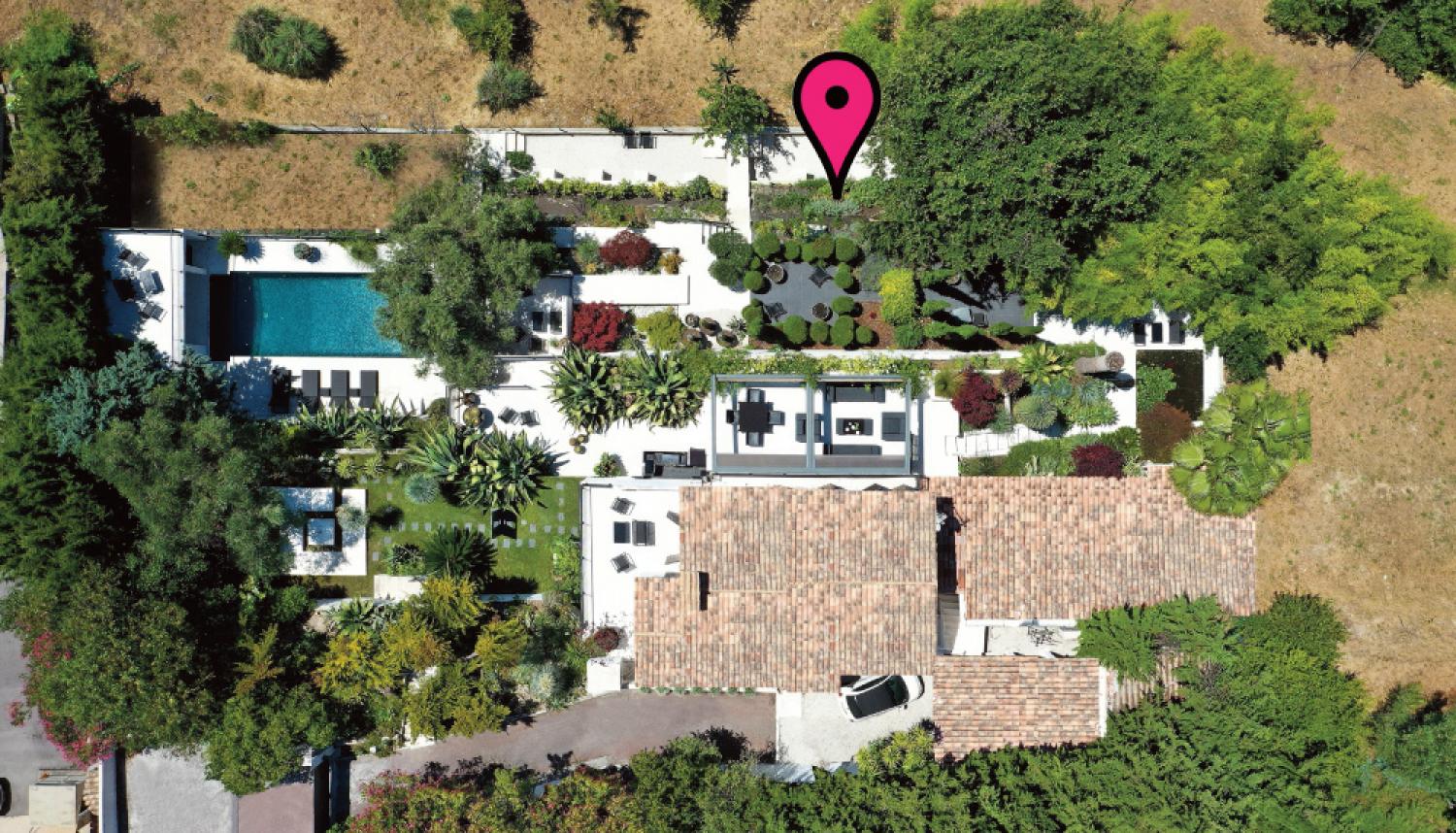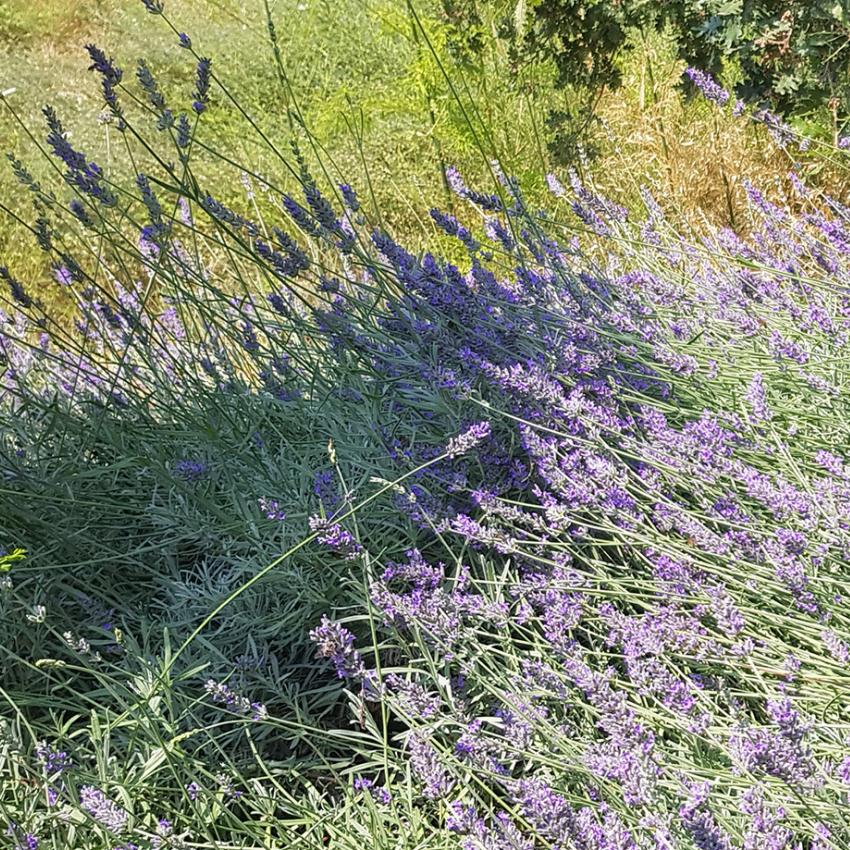
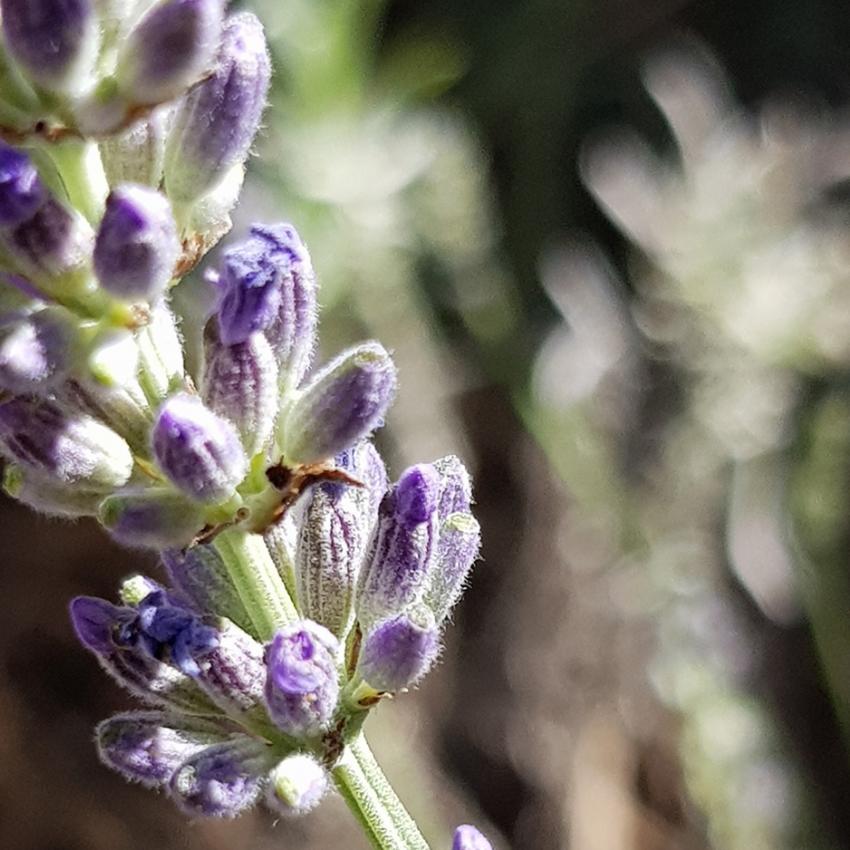
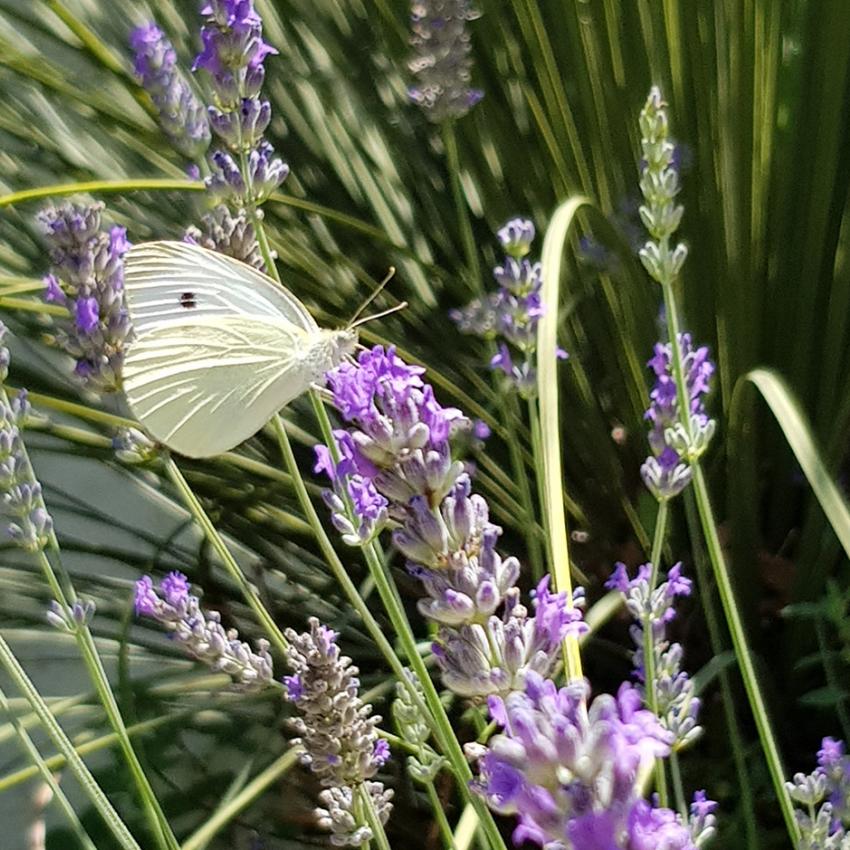
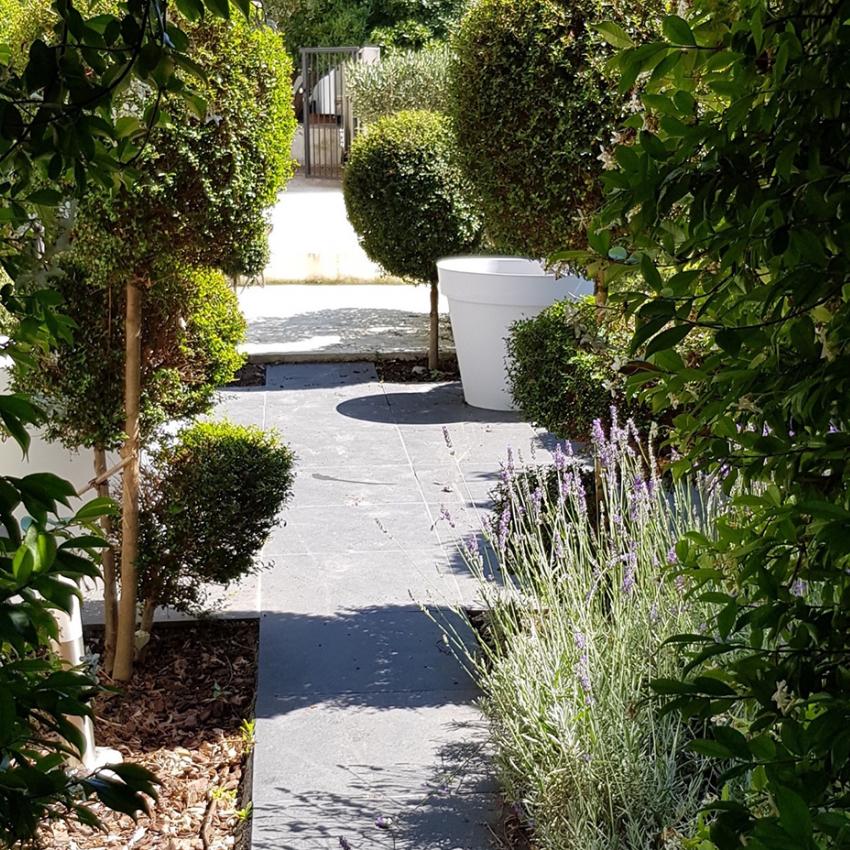
Lavender
Lavandula intermedia
Provence French Lavender (Lavandula intermedia 'Provence') sometimes called Lavandin is an intensely fragrant lavender.
The word lavender is generally thought to be derived from Old French ‘lavandre’ ‘and ultimately from the Latin ‘lavare’ (to wash), referring to the use of infusions of the plants. It is also suggested that that the name may be derived from Latin ‘livere’ meaning "blueish".
Lavender buds can amplify both sweet and savory flavors in dishes, and are sometimes paired with sheep's-milk and goat's-milk cheeses. Lavender flowers can be blended with black, green, or herbal teas.The greens are used similarly to rosemary or combined with rosemary to flavour meat and vegetables in savory dishes. They can also be used to make a tea that is milder than teas made with the flowers. Lavender flavours baked goods and desserts, pairing especially well with chocolate. In the United States, lavender syrup and dried lavender buds are used to make lavender scones and marshmallows. The flowers yield abundant nectar, from which bees make a high-quality honey. Monofloral honey is produced primarily around the Mediterranean, and is marketed worldwide as a premium product.
Lavender can be used decoratively in dishes or spirits, or as a decorative and aromatic in a glass of champagne.
Commercially, the plant is grown mainly for the production of lavender essential oil. English lavender (Lavandula angustifolia) yields an oil with sweet overtones, and can be used in balms, salves, perfumes and cosmetics.

Find the plant...
